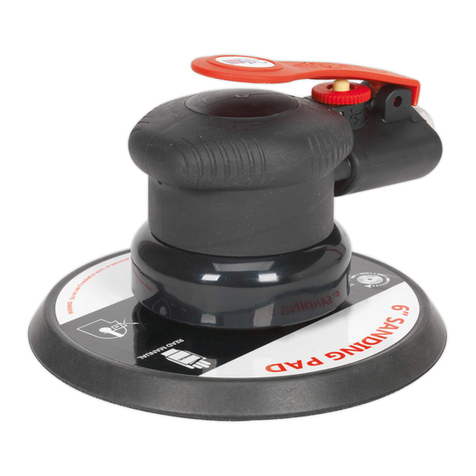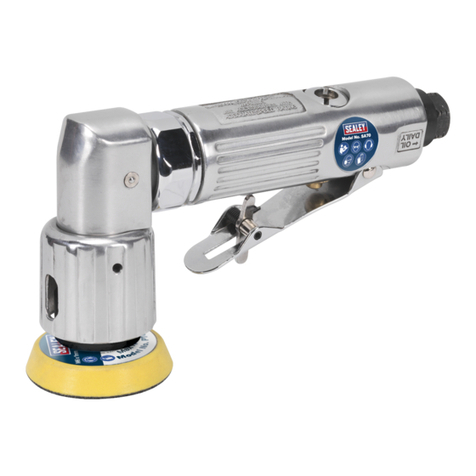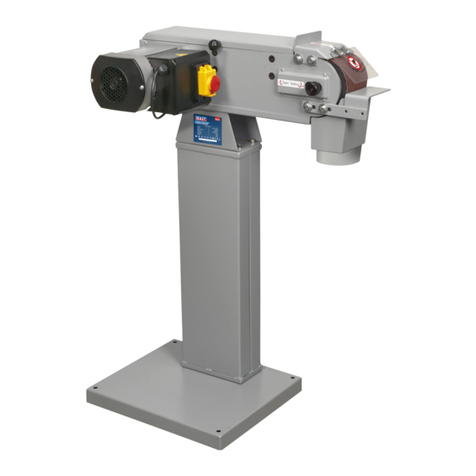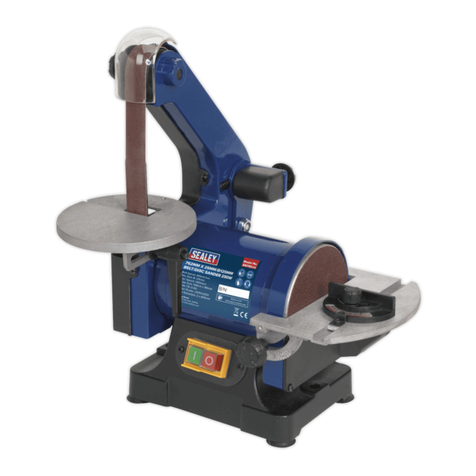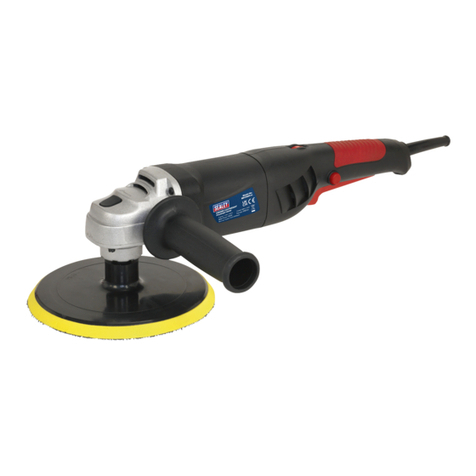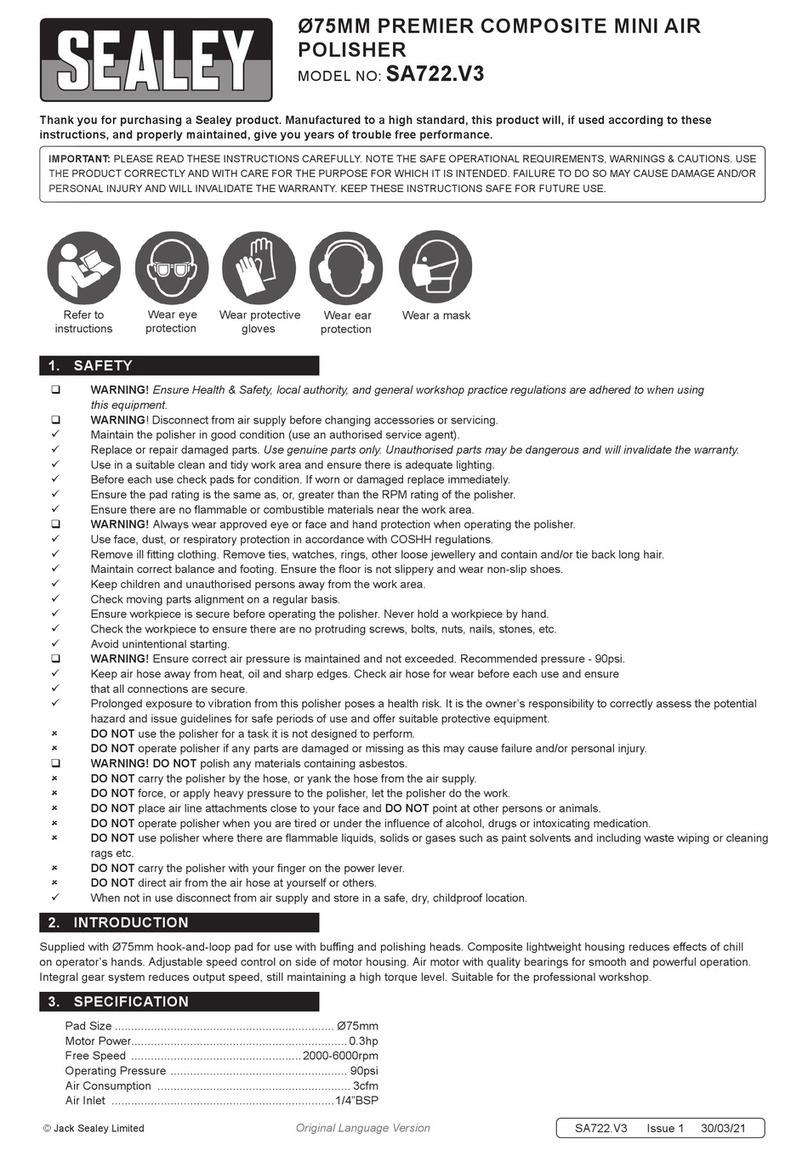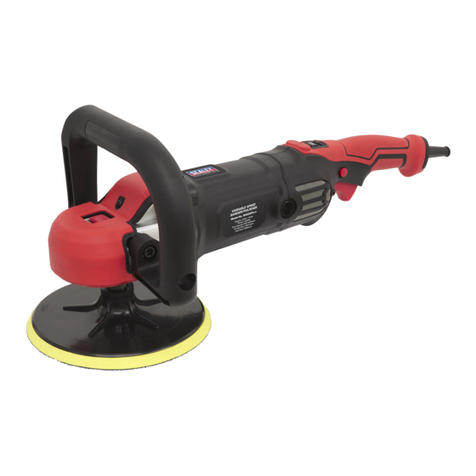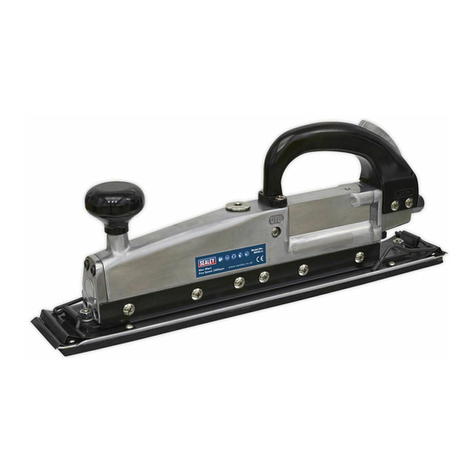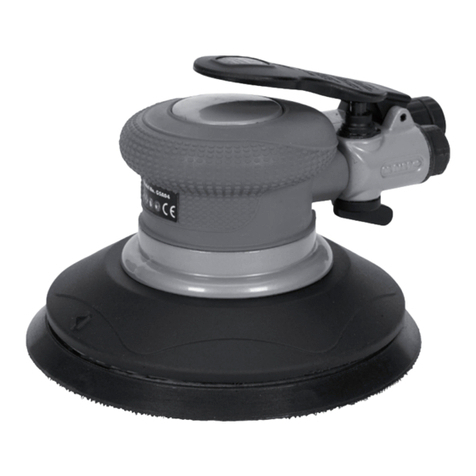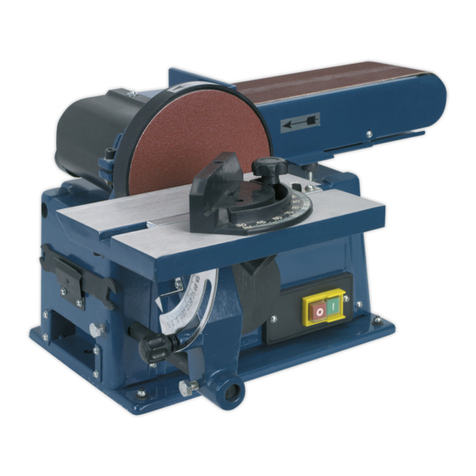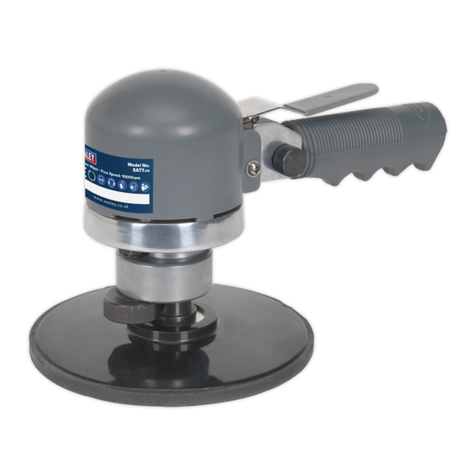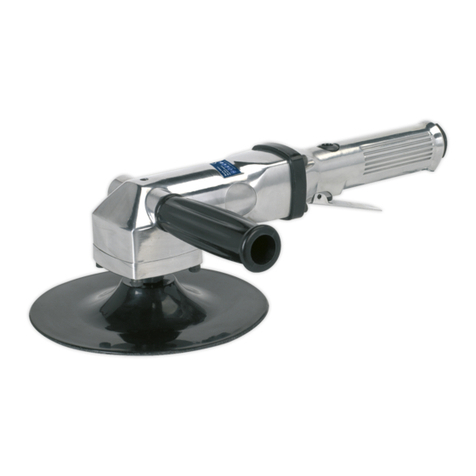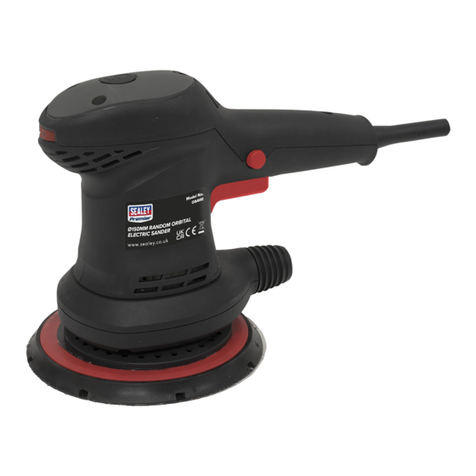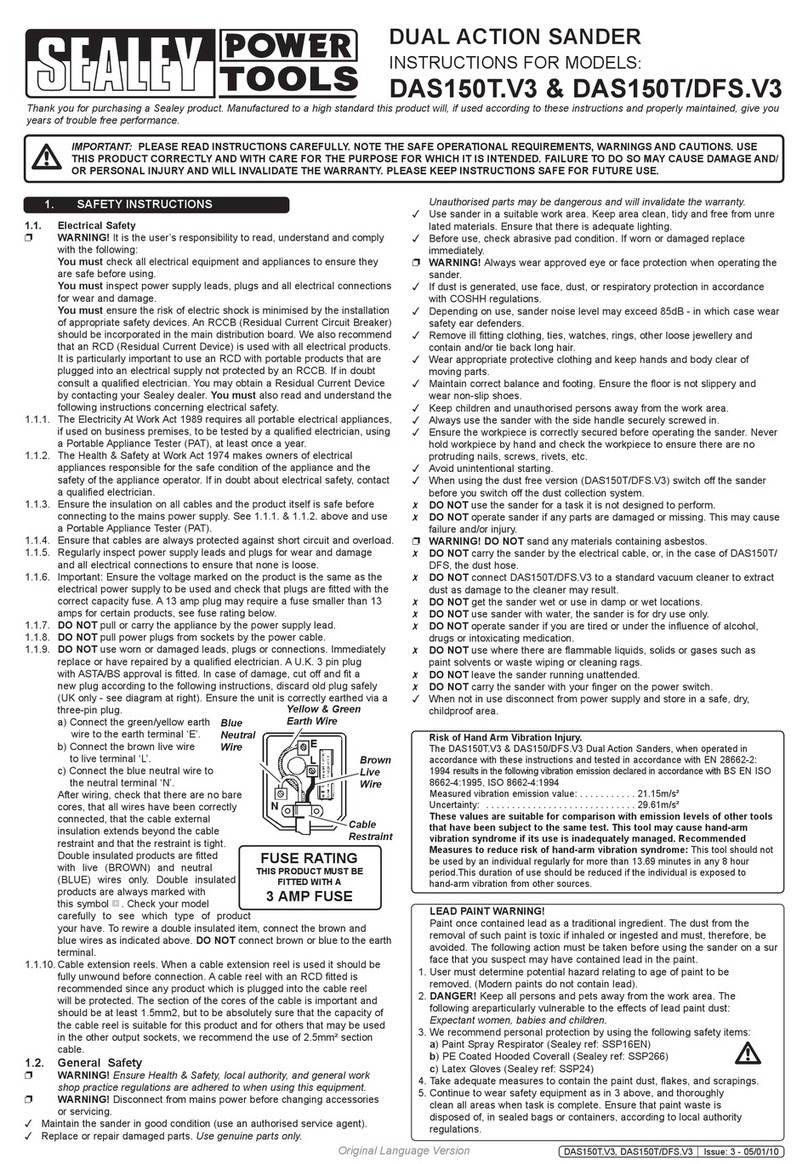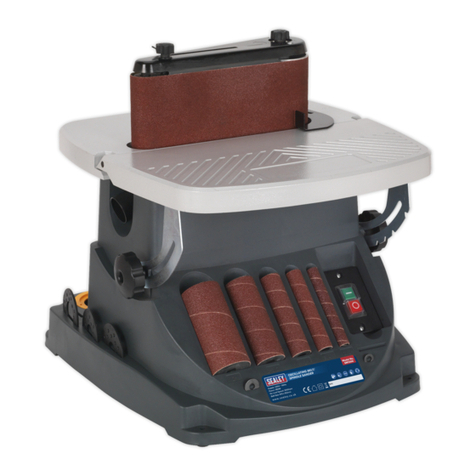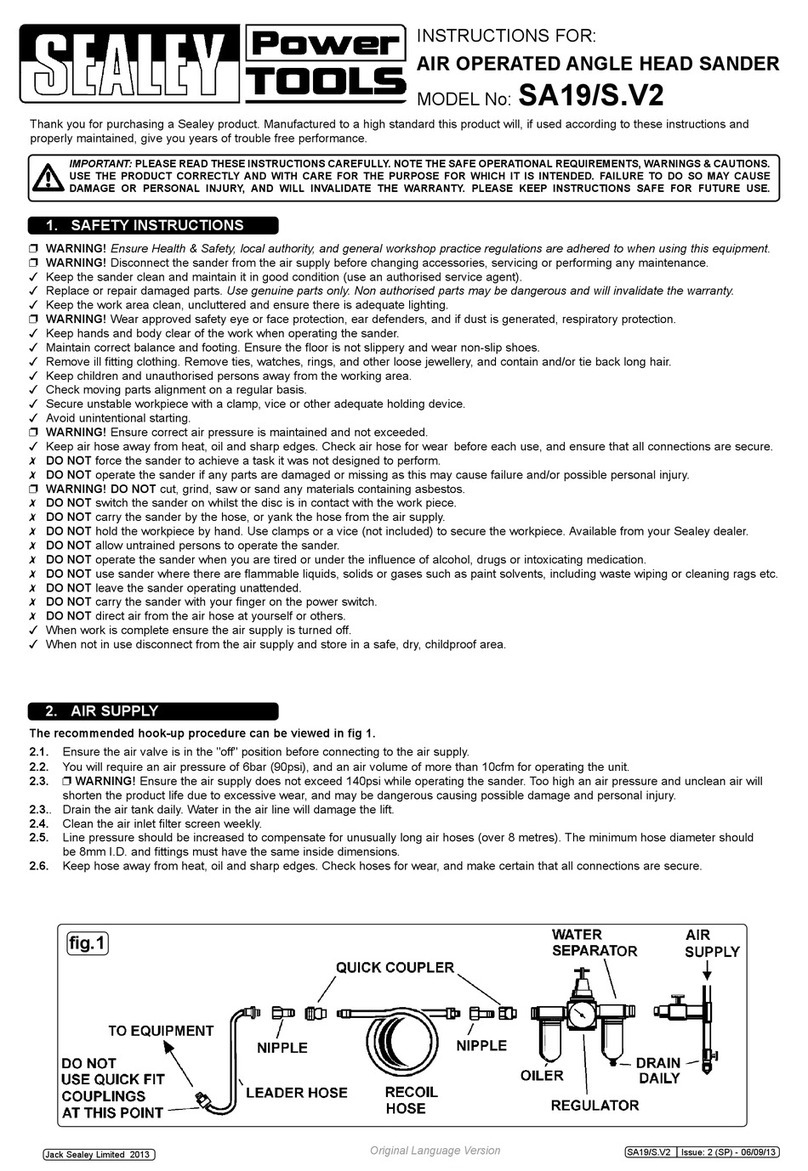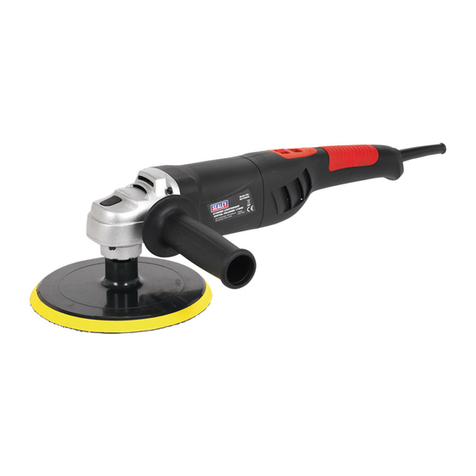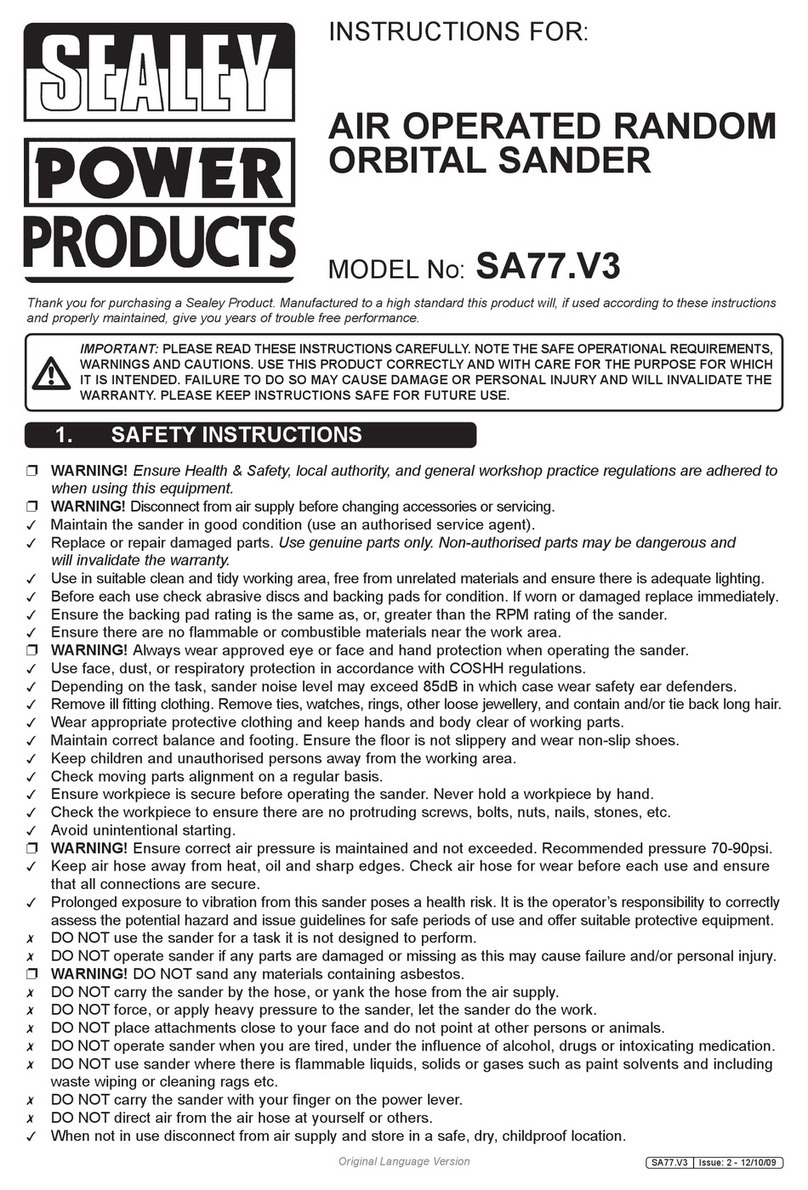
1.1 GENERAL SAFETY.
Disconnect the battery from the polisher unit before changing
accessories, servicing or performing any maintenance.
Maintain the polisher and battery in good condition. Check
moving parts alignment on a regular basis.
Replace or repair damaged parts. Use an authorised service
agent and recommended parts only. Unauthorised parts may
be dangerous and will invalidate the warranty.
Ensure the polisher is switched off before installing the battery.
Keep the polisher, battery and charger clean for best and safest
performance.
Remove ill fitting clothing. Remove ties, watches, rings and
other loose jewellery and contain long hair.
Evaluate your working area before using the polisher e.g.
ceiling, floors and enclosures may contain electrical items or
water piping.
Ensure battery is correctly inserted into the polisher handle
and latched in place before attempting to switch on polisher.
Secure loose workpieces with a clamp, vice or other adequate
holding device.
Avoid unintentional starting.
Wear approved safety eye protection (standard spectacles are
not adequate).
Maintain correct balance and footing. Ensure the floor is not
slippery and wear non-skid shoes.
Be aware that this polisher does not need to be plugged into
the mains power.
Keep children and unauthorised persons away from the
working area.
DO NOT use the polisher where there are flammable liquids,
solids or gases, such as paint solvents, etc.
DO NOT allow children to operate the polisher.
DO NOT operate the polisher if any parts are missing as this
may cause failure or possible personal injury.
DO NOT hold unsecured workpiece in your hand.
DO NOT carry the polisher with your finger on the power
switch.
DO NOT use the polisher for a task it is not designed to perform.
DO NOT operate the polisher when you are tired or under the
influence of alcohol, drugs or intoxicating medication.
DO NOT get the polisher, battery or charger wet or use in damp
or wet locations.
Keep polisher, battery and charger in a safe, dry, childproof
area where the temperature will not exceed 104°F (40°C).
1.2 ELECTRICAL SAFETY.
REGARDING DIRECT MAINS POWER USE WITH THE
CHARGING BASE AND PLUG ONLY.
WARNING! It is the owner’s responsibility to read, understand
and comply with the following electrical instructions:
You must ensure the risk of electric shock is minimised by the
installation of appropriate safety devices. An RCCB (Residual
Current Circuit Breaker) should be incorporated in the main
distribution board. We also recommend that an RCD (Residual
Current Device) is used with all electrical products, particularly
portable equipment which is plugged into an electrical supply
not protected by an RCCB.You must also read and understand
the following instructions concerning electrical safety.
The Electricity At Work Act 1989 requires all portable•
electrical appliances, if used on business premises, to be
tested by a qualified electrician, using a Portable
Appliance Tester (PAT), at least once a year.
The• Health & Safety at Work Act 1974 makes owners of
electrical appliances responsible for the safe condition of the
appliance, and the safety of the appliance operator. If in any
doubt about electrical safety, contact a qualified electrician
Battery Charger Safety Instructions•
WARNING! DO NOT use the charging base to charge any
battery other than that required for the tool. Other types of
batteries may explode!
Inspect the plug, cable and the charging base for wear
and damage to ensure items are safe before connecting to the
mains power supply. If worn or damaged DO NOT use,
immediately replace, or contact a qualified electrician.
Check cables are always protected against short circuit and
overload.
Uncoil the power cable between the plug and the charging base
before use.
DO NOT pull or carry the charging base by the charger power
lead, or pull the plug from the mains socket by the power lead.
DO NOT use any other type of transformer with the charging
base.
DO NOT try to open or dis-assemble the plug or charging base.
DO NOT use the plug to power any other electrical item.
Disconnect the plug from the charging base and the mains
power supply when not in use.
DO NOT expose the charging base to damp or wet conditions
(for indoor use only).
DO NOT pull or carry the charging base by the power lead.
DO NOT operate the charging base if it has been dropped, or
has received a sharp knock, or is damaged. Contact an
authorised service agent.
DO NOT dismantle the charging base as this may cause
damage or personal injury and will invalidate your warranty.
DO NOT insert foreign objects or material into the hole
reserved for the battery.
DO NOT immediately charge a second battery. Consecutive
charging will overheat the charging base. Allow the unit to cool
for 15 minutes before charging the next battery.
Ensure that the insulation on all cables and on the appliance is
safe before connecting it to the power supply.
Ensure that cables are always protected against short circuit
and overload.
DO NOT use worn or damaged
cables, plugs or connectors.
Immediately have any faulty
item repaired or replaced by a
qualified electrician. When a
BS1363/A UK 3 pin plug is
damaged, cut the cable just
above the plug and dispose of
the plug safely.
Fit a new plug according to the
following instructions (UK only).
a) Connect the GREEN/YELLOW earth wire to the earth
terminal ‘E’.
b) Connect the BROWN live wire to the live terminal ‘L’.
c) Connect the BLUE neutral wire to the neutral terminal ‘N’.
d) After wiring, check that there are no bare wires, that all
wires have been correctly connected, that the cable outer
insulation extends beyond the cable restraint and that the
restraint is tight.
1. SAFETY INSTRUCTIONS
INSTRUCTIONS FOR:
CORDLESS LITHIUM-ION
POLISHER 12V
MODEL No: CP4005
Thank you for purchasing a Sealey product. Manufactured to a high standard this product will, if used according to these instructions and properly
maintained, give you years of trouble free performance.
IMPORTANT: PLEASE READ THESE INSTRUCTIONS CAREFULLY. NOTE THE SAFE OPERATIONAL REQUIREMENTS, WARNINGS, AND
CAUTIONS. USE THIS PRODUCT CORRECTLY, AND WITH CARE FOR THE PURPOSE FOR WHICH IT IS INTENDED. FAILURE TO DO SO MAY
CAUSE DAMAGE AND/OR PERSONAL INJURY AND WILL INVALIDATE THE WARRANTY.
FUSE RATING
5 AMP
Blue
Neutral
Wire
Yellow & Green
Earth Wire
Cable
Restraint
Original Language Version CP4005 Issue: 2 - 01/03/10
